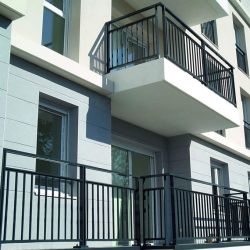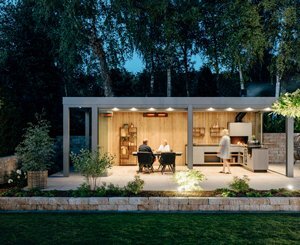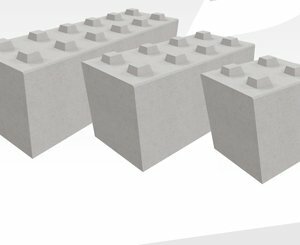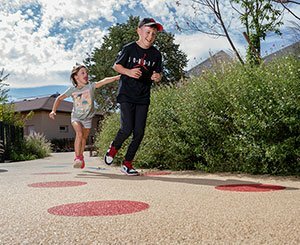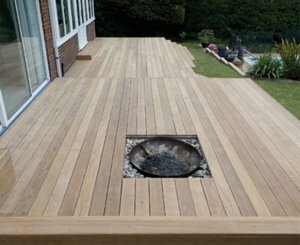From March 2022 to February 2023, the number of dwellings authorized for construction stands at 461.200 dwellings, i.e. 24.400 less than during the previous twelve months (- 5,0%) and 0,3% more than during the last twelve months preceding the health crisis (March 2019 to February 2020). In February 2023, the number of housing units started would be slightly lower than 30.000, in CVS-CJO data, i.e. a level close to that estimated for the last six months, but 3% lower than the average for the twelve months preceding the health crisis.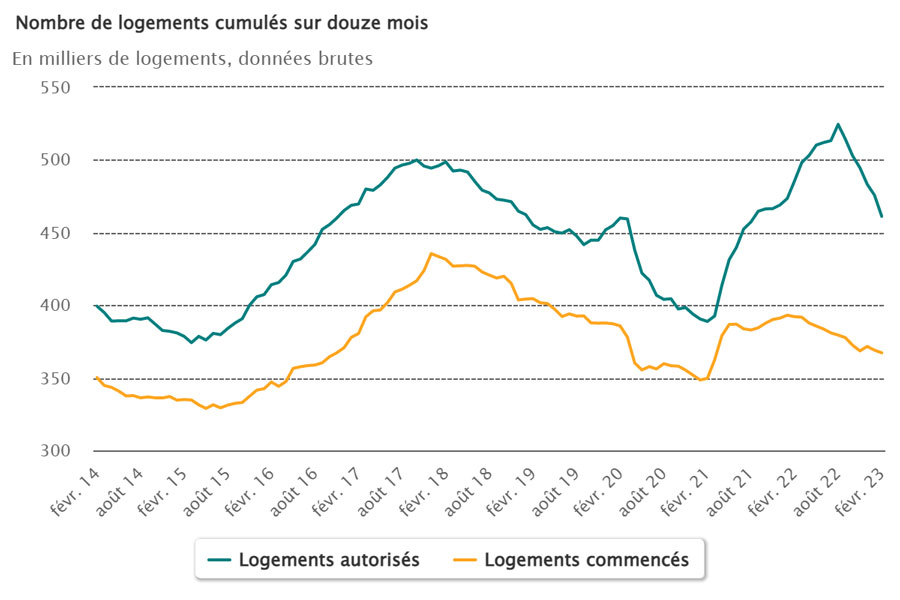
Dwellings authorized and started on a month-to-month basis (CVS-CJO data)
In February 2023, housing authorizations (to 34.500) increased slightly compared to January but remained below their average level for the twelve months preceding the first confinement (-11%), in data adjusted for seasonal variations and working days ( CVS-CJO). Authorizations for individual housing increased slightly but remained much lower (-15%) than their average for the twelve months preceding the health crisis. Authorizations for collective housing and residences are 8% lower than this same benchmark.
In February, housing units started would be slightly below the 30.000 mark and would be 3% lower than their average for the twelve months preceding the health crisis, in data adjusted for seasonal variations and working days (CVS-CJO). Individual housing starts are expected to rebound but remain 2% below their average for the twelve months preceding the first confinement. Construction starts for collective housing or residences are said to be 10% lower than their pre-crisis average.
Dwellings authorized and started over the last three months (CVS-CJO data)
From December 2022 to February 2023, authorized housing rebounded (+ 10,3% after - 34,5%) compared to the previous three months, which were marked by a decline following the jump in authorizations in August, in adjusted data seasonal and working days (CVS-CJO). Individual housing declined less sharply than in the previous quarter (-2,1% after -6,7%). Collective housing or residences, which had been the only ones affected by the exceptional increase in authorizations in August, experienced a significant rebound (+ 20,2% after - 47,1%).
Over the past three months, housing starts are estimated to have increased (+2,3%) compared to the previous three months, when they were down slightly (-0,3%), in CVS-CJO data. Collective housing or residences should continue to grow (+3,6% after +3,0%), individual housing should experience a slight rebound (+0,5% after -4,3%).
Dwellings authorized and started over the last twelve months (raw data)
From March 2022 to February 2023, 461.200 housing units were authorized for construction, i.e. 24.400 less than in the previous twelve months (- 5,0%). At the same time, it is estimated that 376.200 housing units were started, i.e. 24.900 less (-6,3%) than between March 2021 and February 2022. If we take the 12 months preceding the health crisis as a point of comparison (March 2019 to February 2020), the number of dwellings authorized in the last 12 months is 0,3% higher, that of dwellings started is lower by 4,8%.
Authorizations for individual dwellings fell by 48.500 dwellings between March 2022 and February 2023 compared to the previous twelve months (-21,6%) to return to 176.300 units, and are 5,3% below the value before -crisis. Pure individual dwellings would have decreased significantly (- 28,8%) unlike grouped individual dwellings (+ 0,2%).
During this period, individual housing starts would have decreased by 6.000 units (- 3,7%) and would stand at 159.600 housing units started. Both pure individual housing and grouped individual housing would have fallen (-3,6% and -4,0% respectively).
In the collective housing or residence sector, 34.000 more housing units (+9,2%) were authorized between March 2022 and February 2023 compared to the previous twelve months. Authorizations for ordinary collective housing (+ 6,9%) increased to a lesser extent than those for residential housing (+ 21,0%).
Starts of collective housing or residences are estimated to be down by 18.900 units (- 8,3%) compared to the previous 12 months. Ordinary collective housing (-8,1%) and residence housing (-9,4%) would both have decreased.
Housing by region (raw data)
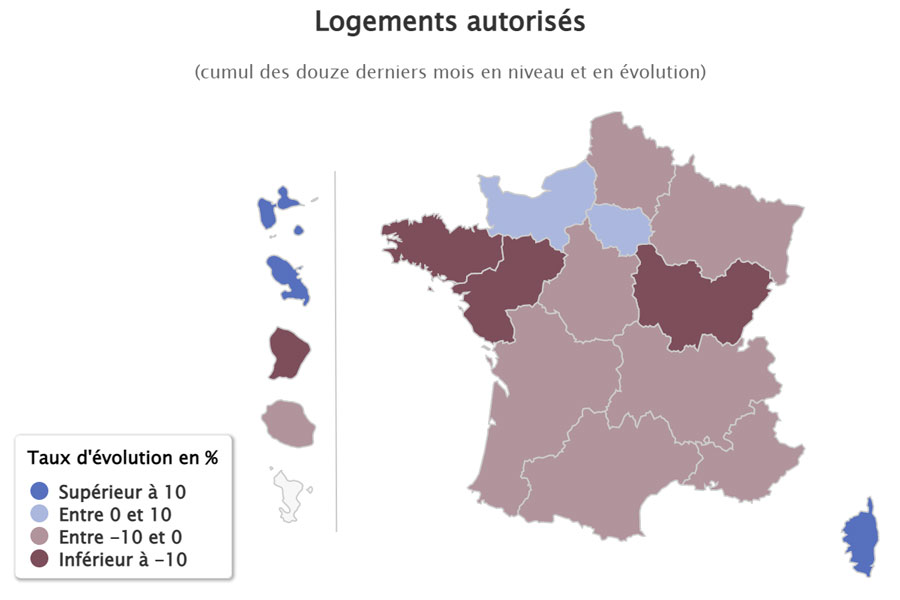
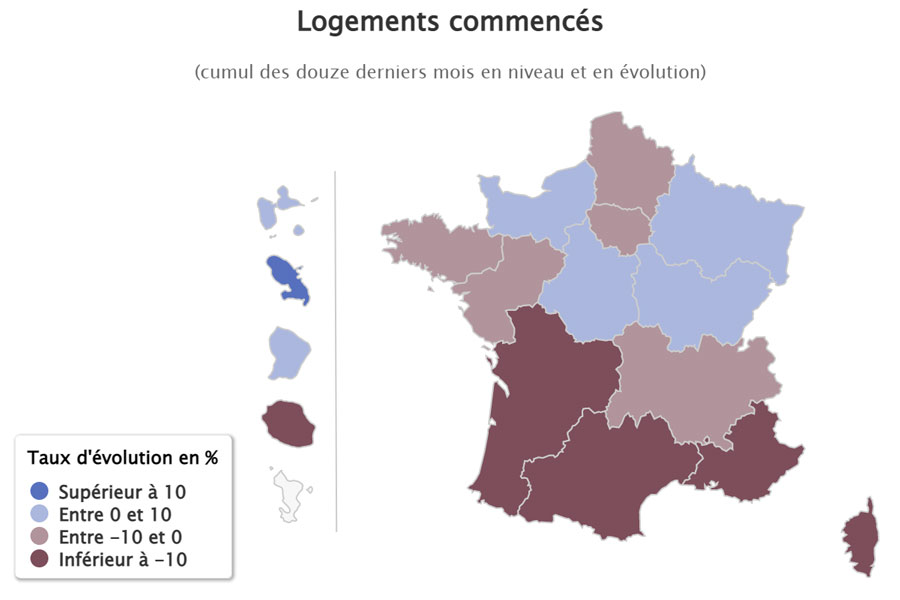
Methodology
Due to the context of instability since the health crisis, the methods had to be adjusted compared to those used previously (described in the detailed methodology and synthetic methodology notes published on the SDES website). This is especially the case for housing starts. Indeed, their estimate was deduced from that of authorizations within the framework of a model which assumed a relative stability in the distribution of construction start times and cancellation rates. This model could not take into account a context as changing as that observed since the health crisis, even if it remains useful for a medium-term framework and verification of the consistency between the estimates of housing starts and those of authorizations.
Estimates of housing starts are therefore based much more than previously on the declarations of the opening of construction sites which are collected in the Sitadel2 database. This poses a problem, because the centralization of information on site openings is much less exhaustive and rapid than that of authorizations: on average, 41% of site openings carried out in a given month reach Sitadel2 the following month, compared to 72% for authorizations, 69% after six months against 92% for authorizations. It is therefore necessary to make adjustments to anticipate future information feedback, assuming relative stability in data collection. The method used gave satisfactory results before the health crisis, but remains fragile in the current context, where the collection of information is also disrupted. In this context, the published estimates are likely to give rise to significant revisions.
Given the impossibility of having reliable estimates for housing authorized over the recent period, cancellations, construction start times and stocks remaining to be started are no longer published or estimated. Past trends in cancellation rates and delays are analyzed periodically during the annual review exercise.
For authorisations, the method has also been adapted to better take into account collection irregularities. It gives similar results over the past to the method previously used, but appears more robust in the event of major breaks.
The different categories of accommodation are as follows:
- a pure individual dwelling is the subject of a building permit relating to a single individual dwelling;
- grouped individual dwellings are the subject of a building permit relating to the construction of several individual dwellings (for example in a housing estate or in an individual house with two dwellings), or of an individual dwelling associated with collective dwellings or non-residential premises;
- collective dwellings are part of a building in which more than two separate dwellings are superimposed, access to which requires the use of common areas. In the case of operations grouping together both individual housing and collective housing, each is counted in its respective type of construction;
- residential accommodation is accommodation (individual or collective) built with a view to being occupied by a targeted public according to the nature of the residence, generally with the provision of adapted services;
- ordinary accommodation is defined as opposed to residence accommodation. They include in Sitadel2 pure individual housing, grouped individual housing and collective housing excluding residences.
Six main types of residences are identified:
- residences for the elderly;
- student residences;
- tourist residences;
- hotel residences with a social vocation;
- social residences;
- residences for disabled people.
 Since Covid-19, the temptation to live near the sea, according to a study
Since Covid-19, the temptation to live near the sea, according to a study
 The average rate of real estate loans starts to fall again in the 1st quarter, according to Crédit Logement
The average rate of real estate loans starts to fall again in the 1st quarter, according to Crédit Logement
 Old property prices are still falling but a recovery is taking shape
Old property prices are still falling but a recovery is taking shape
 The mortgage rate fell in February, for the first time in 1 years
The mortgage rate fell in February, for the first time in 1 years
 Executives are investing more than before in the outskirts of cities, according to a study
Executives are investing more than before in the outskirts of cities, according to a study
 Is the investment in stone going against the wall?
Is the investment in stone going against the wall?
 How is the purchasing power of the French in new real estate evolving?
How is the purchasing power of the French in new real estate evolving?
 Real estate: borrowers have gained up to 9m² of purchasing capacity over the last 6 months
Real estate: borrowers have gained up to 9m² of purchasing capacity over the last 6 months
 A report on anticipating the effects of +4°C warming reaffirms the need for housing adaptation
A report on anticipating the effects of +4°C warming reaffirms the need for housing adaptation
 AI is already revolutionizing businesses in architecture, engineering, construction... according to Autodesk's "State of Design & Make" study
AI is already revolutionizing businesses in architecture, engineering, construction... according to Autodesk's "State of Design & Make" study
 The slowdown in the decline in mortgage rates continues
The slowdown in the decline in mortgage rates continues
 Artisanté Barometer: the impact of economic uncertainty and administrative burden on the health of heads of artisanal construction companies is confirmed
Artisanté Barometer: the impact of economic uncertainty and administrative burden on the health of heads of artisanal construction companies is confirmed








